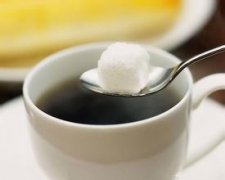Same Earth, different Coffee habits

01. People in the Middle East are obsessed with basic drinking methods. They deeply roast coffee beans to near Dark Roast, usually grind them into a very fine powder, boil them several times, and add sugar to make a small cup of very strong, bitter, sweet, and settled coffee. This is also the difference of coffee culture in different countries. Understanding the coffee culture of these different countries plays a crucial role in the pattern of coffee chain brands and coffee franchisees.
02. Europeans and urban Latin Americans are accustomed to drinking a cup of coffee in the morning and afternoon or evening. They prefer coffee that is deeply roasted, half-bitter, half-sweet and has a burnt taste. Preferably brewed on an Espresso machine, a small cup dark, rich, with an oily top and a little sediment at the bottom of the cup. In the morning, a small cup of this coffee is mixed with hot milk in a bowl or mug, and coffee drinkers hold the bowl or cup in both hands, warm their palms with the heat of the coffee, or feel the aroma of the coffee in their nostrils, and if possible, they even want to jump into the bowl or cup to take a bath. In the afternoon or evening, southern Europeans prefer black, strong, bitter, sweet coffee in small cups (about a quarter of the size of the bowl used in the morning) similar to those used in the Middle East.
03. Northern Europeans and continental Europeans have very different preferences for a perfect cup of coffee than Middle Easterners. First of all, the brewed coffee is free of sediment, light and round, and the coffee beans are roasted brown instead of black. Brewing method does not drop coffee (i.e. Drip Coffee) or machine coffee (i.e. Espresso Italian coffee or Espresso variant of various fancy coffee-cappuccino, Viennese coffee, French milk coffee,... etc.).
04. In English-speaking countries, people are used to adding milk and sugar to coffee, but because they drink coffee that is lighter, the added milk and sugar often affect and drown the strength and flavor of coffee. The habit of drinking coffee began to be popular in North America during World War II. In order to reduce the cost of drinking coffee and meet the demand at any time, American coffee is usually brewed in a pot and placed on a hot plate to keep warm at any time. The brewed coffee is very weak. The typical North American coffee drinker treats coffee as a daily beverage, drinking coffee from the coffee pot in the office all day, or carrying coffee at home, not only after meals, but also at the beginning of the day and during breaks.
There are many different ways people drink coffee in different countries, but if you ask how many ways to drink coffee, I am afraid no one can say clearly. There are as many ways to drink coffee as there are countries in the world. One third of the world's population drinks coffee, but no two countries seem to drink coffee the same way, and neither does coffee culture!
01. Arabia: People in Arab countries like to drink small sweet coffee.
02. France: At breakfast, the French like to drink coffee from a bowl and use chicory root to blend out the flavor. French people generally prefer weaker coffee than Italians. This coffee is generally produced by steeping coffee beans that are moderately roasted and coarsely ground.
03. Holland: Dutch people like strong coffee, coffee and sugar in a pot, accompanied by a can of cream and a glass of water.
04. Italy: Italian coffee features performance in its English, that is, a fast word, fast no more than ten seconds, drink fast, because only two or three. Italians get up first thing is to brew a cup of coffee, regardless of gender almost from morning to night drink. Italian coffee is an espresso served in a small cup.
05. Russia: Russia is a country of tea. But when they drank coffee, they opted for black coffee with sugar and a small slice of lemon, which was strong and steady.
06. South India: People in South India are keen on coffee with lots of milk and sugar because drinking it helps to relieve the taste irritation after eating spicy food.
07. Sudan: The Sudanese are accustomed to pouring black coffee into coffee pots and adding cloves and other spices.
08. Turkive: Since Turkish coffee is brewed with coffee powder, it contains a lot of coffee powder, so when tasting it, coffee powder precipitates and then tastes gently. Turkive people also use coffee grounds stuck in coffee cups to divine the future. Turkive coffee is made by boiling good coffee beans, sugar and water in a container called an "Ibrik." This coffee has a strong taste.
09. USA: Americans like lightly roasted coffee with a little cream.
Important Notice :
前街咖啡 FrontStreet Coffee has moved to new addredd:
FrontStreet Coffee Address: 315,Donghua East Road,GuangZhou
Tel:020 38364473
- Prev

Coffee & the secret that has to be told between constellations
Look up to find you and my constellation. Cover me at night to gather clues about you.. What kind of fate and persistence.. In exchange for a romantic result. Having a cup of Cappuccino with you may not know that there is a vivid and mysterious relationship between coffee and the constellation. Each different coffee, like our constellation, represents a different characteristic and temperament.
- Next

Learn about the origins of coffee in Japan
We always look at the origins of coffee in the world. For the first crab eater, we always thought he was great and showed people a special flavor. But we also want to know how coffee has evolved in different countries. Let's talk about the origins of coffee in Japan. Coffee was first introduced to Japan during the Genroku period.
Related
- Beginners will see the "Coffee pull flower" guide!
- What is the difference between ice blog purified milk and ordinary milk coffee?
- Why is the Philippines the largest producer of crops in Liberia?
- For coffee extraction, should the fine powder be retained?
- How does extracted espresso fill pressed powder? How much strength does it take to press the powder?
- How to make jasmine cold extract coffee? Is the jasmine + latte good?
- Will this little toy really make the coffee taste better? How does Lily Drip affect coffee extraction?
- Will the action of slapping the filter cup also affect coffee extraction?
- What's the difference between powder-to-water ratio and powder-to-liquid ratio?
- What is the Ethiopian local species? What does it have to do with Heirloom native species?

